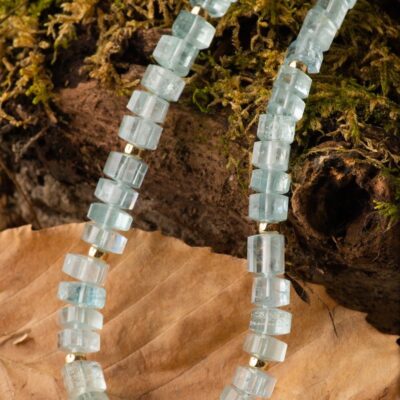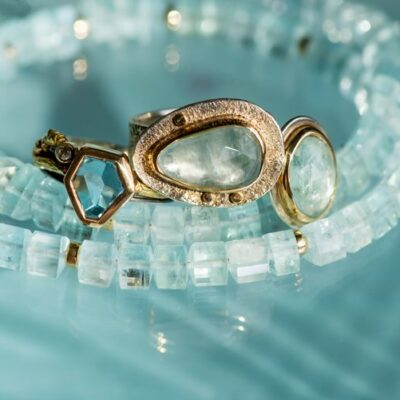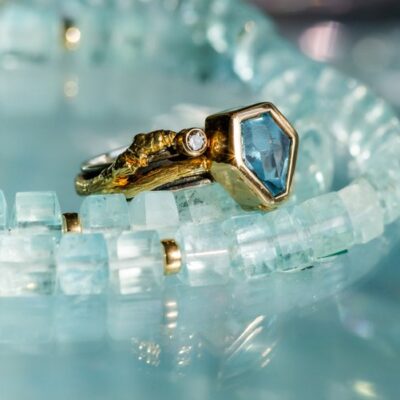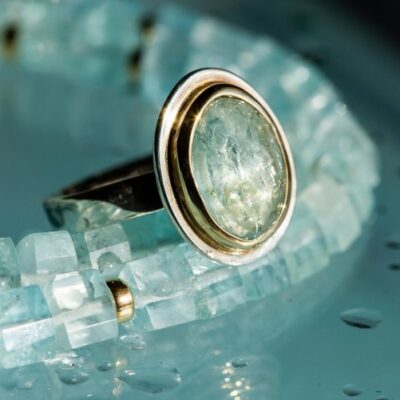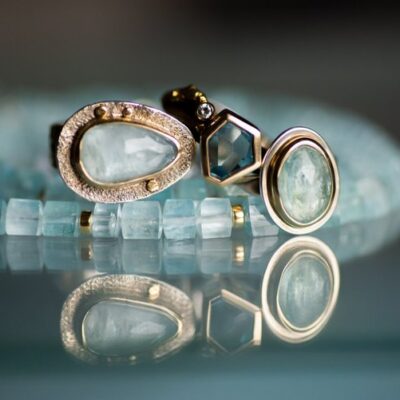Last week, a man came into the gallery to look for a birthday gift for his wife. After exploring the many possibilities (all that sparkle can be a little overwhelming), his eyes settled on a light blue necklace. “I think she’d really like that one.” he said. We took it out of the case so he could take a closer look at the craftsmanship and chatted about its beauty and day to night versatility. “It’s aquamarine, so if your wife’s birthday is in March, this is also her birthstone.” Eyebrows up. “That’s perfect!”
Each person comes into The Jewelbox with a story and each piece of jewelry has its own story too. The magic happens when these stories converge. That’s when you find the perfect piece and start a new story together, one that often with fine jewelry gets passed onto the next generation.
Facts about aquamarine:
- Interestingly, aquamarine’s components are fairly common. Berylium, Aluminum, Silicon, and Oxygen combine to form the mineral called Beryl, which is colorless. It’s the trace amounts of iron in aquamarine that give it its beautiful blue color.
- March’s birthstone (and the gem of the 19th anniversary).
- pale-blue to light green variety of beryl.
- Color can be changed with heat.
- Hexagonal crystal structure.
- Hardness level 7.5-8 making it a good choice for daily wear.
- Can be cleaned with warm, soapy water
- Symbolic of the sky and sea (aqua meaning water and marine meaning of the sea).
- Used to calm the mind, relieve stress, and reflect on truth and wisdom.
- Found all over the world, but one of the largest sources is the state of Minas Gerais in Brazil.
- Chemical formula: Be3Al2Si6O18
- Sources: GIA.edu, AmericanGemSociety.org, Wikipedia.org

